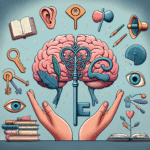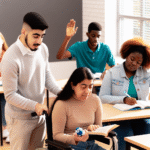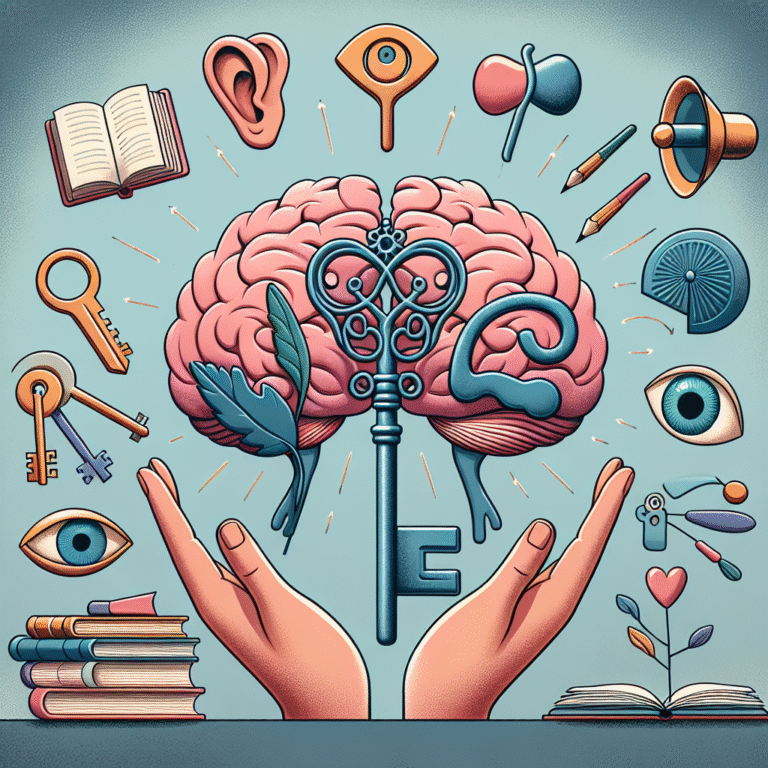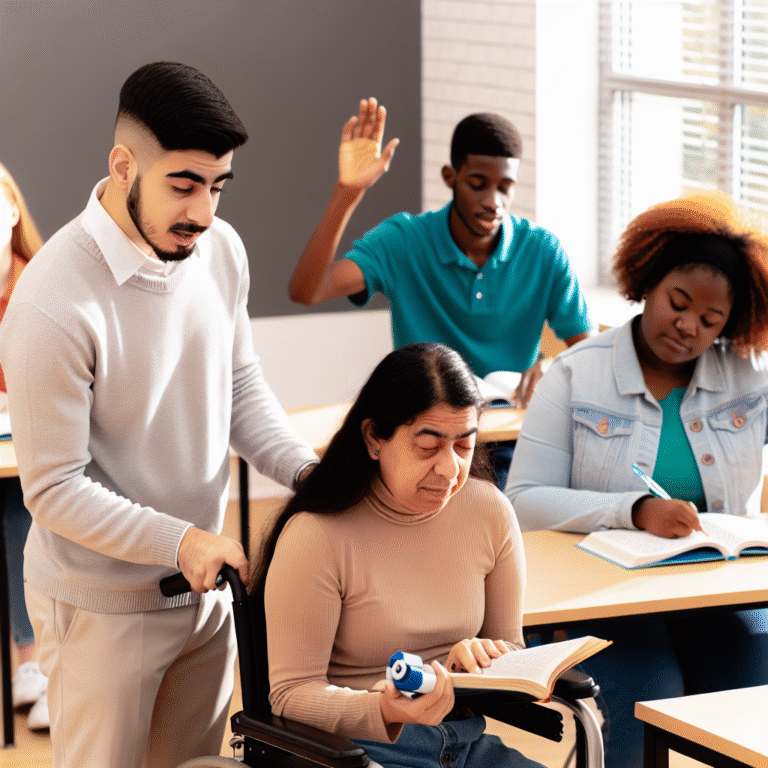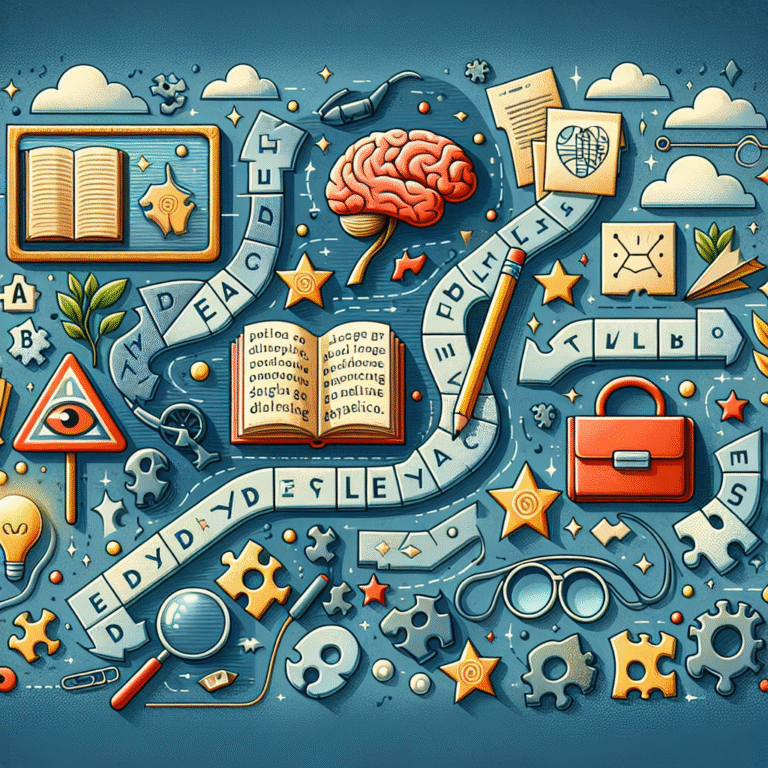
Unpacking Learning Disabilities and ADHD: Myths vs. Facts – The Ultimate Guide to Understanding and Empowering
Introduction
In a world increasingly aware of mental health and neurological diversity, the conversation surrounding learning disabilities and ADHD (Attention-Deficit/Hyperactivity Disorder) has become both crucial and urgent. Unpacking Learning Disabilities and ADHD: Myths vs. Facts is not merely a discussion; it’s a necessary exploration into the realities that impact millions of individuals and their families. Far too often, misunderstandings perpetuate stigma, prevent effective support, and diminish the potential of those with these challenges.
In this article, we will embark on an enlightening journey, dissecting pervasive myths while illuminating factual truths about learning disabilities and ADHD. Whether you’re an educator, parent, or simply curious, you’re bound to uncover insights that can foster empathy, understanding, and efficient strategies for support.
Understanding Learning Disabilities and ADHD
What Are Learning Disabilities?
Learning disabilities refer to a variety of disorders that affect the capacity to acquire and use skills in reading, writing, mathematics, and reasoning. For example, dyslexia (reading difficulty) and dyscalculia (difficulty with numbers) are common types that hinder standard educational progress. Each type may manifest differently, making it essential to approach each case with a tailored understanding.
Understanding ADHD
ADHD, on the other hand, is characterized by persistent patterns of inattention, hyperactivity, and impulsivity. Unlike learning disabilities, ADHD does not solely impact academic skills; it affects organizational abilities, time management, and self-regulation. Recognizing and differentiating these characteristics lays a foundation for compassionate understanding.
Case Study: Alex’s Journey
Consider Alex, a bright 12-year-old boy diagnosed with ADHD and dyslexia. In the classroom, he struggles to read aloud and often loses focus during lessons. While these challenges initially led his teachers to label him as ‘lazy’ or ‘disruptive,’ a deeper understanding of learning disabilities and ADHD allowed them to see beyond surface behaviors. With customized reading programs and behavior management strategies, Alex not only improved academically but thrived socially, illustrating the critical importance of accurate understanding.
Myth 1: Learning Disabilities and ADHD Are the Same
Fact
While learning disabilities and ADHD may co-exist, they are distinct conditions. Learning disabilities specifically hinder academic skills, while ADHD primarily affects attention and behavior. Both require different strategies for support and intervention.
Case Study Analysis
Let’s revisit Alex. His diagnosis of both ADHD and dyslexia showcases that while these conditions are separate, their interplay significantly complicates his learning experience. Tailored interventions must address both areas concurrently to maximize Alex’s potential.
Myth 2: Individuals with Learning Disabilities and ADHD Are Less Intelligent
Fact
This myth could not be further from the truth. Many individuals with learning disabilities or ADHD possess above-average intelligence. Their struggles do not reflect inferior cognitive abilities; instead, they struggle with specific tasks. In fact, some of the most successful innovators and thinkers, such as Albert Einstein and Agatha Christie, had learning differences.
Chart: Successful Figures with Learning Disabilities and ADHD
| Name | Condition | Achievement |
|---|---|---|
| Albert Einstein | Presumed dyslexia | Theoretical physicist |
| Agatha Christie | Dysgraphia | Bestselling author |
| Michael Phelps | ADHD | Olympic swimmer |
| Cher | Dyslexia | Acclaimed singer and actress |
Relevance
Highlighting successful individuals reinforces the reality that learning disabilities and ADHD do not equate to diminished intellect; rather, they require alternative strategies for learning and self-expression.
Myth 3: Medication Is the Only Solution for ADHD
Fact
While medication can be beneficial for some individuals with ADHD, it is not a one-size-fits-all solution. Behavioral therapy, lifestyle changes, and academic accommodations can significantly help in managing symptoms effectively. Comprehensive strategies provide a more balanced approach.
Case Study: Mia’s Holistic Approach
Mia, a 10-year-old girl diagnosed with ADHD, benefitted from a combination of medication, cognitive-behavioral therapy, and regular exercise. By prioritizing structure and routine, Mia’s focus improved dramatically. This illustrates that while medication can be a tool, it should be part of a broader strategy.
Myth 4: Learning Disabilities and ADHD Are Just Excuses for Bad Behavior
Fact
Labels like "lazy" or "disruptive" ignore the very real challenges faced by individuals with learning disabilities and ADHD. These conditions often manifest as frustration, anxiety, and inefficiency in a traditional learning environment. Understanding these challenges fosters compassion rather than judgment.
Table: Signs of Distress in Learning Disabilities and ADHD
| Behavior | Possible Underlying Cause |
|---|---|
| Increased frustration | Difficulty processing information |
| Difficulty in social settings | Inattention or impulsivity |
| Low self-esteem | Repeated struggles in academic settings |
Case Study Analysis
By recognizing these signs, educators and parents can adopt compassionate approaches that address the “why” behind behaviors, rather than simply reacting to the “what.”
Myth 5: The Labels Result in a Life Sentence
Fact
The notion that a diagnosis seals one’s fate is deeply misleading. With appropriate support, many individuals with learning disabilities and ADHD lead successful, fulfilling lives. Early intervention and sustained support can foster skills and resilience that continue into adulthood.
Case Study: Emma’s Path
Emma, diagnosed with a learning disability in her early school years, faced barriers to success. However, with tailored educational plans and encouragement from her teachers and family, she developed strategies that allowed her to graduate from college and secure a job. Emma’s success underscores that challenges can be transformed into strengths with the right support.
Building a Supportive Environment
Effective Strategies for Schools and Parents
Creating supportive environments for individuals with learning disabilities and ADHD requires collaboration, empathy, and informed strategies. Here are some effective tactics:
- Tailored Learning Plans: Educators should develop Individualized Education Programs (IEPs) that cater to the unique learning needs of students.
- Open Communication: Encouraging dialogue between educators, parents, and students fosters a sense of community and shared understanding.
- Multimodal Learning: Incorporating varied teaching methods—such as visual aids, hands-on activities, and technology—can cater to diverse learning styles.
Conclusion
As we’ve explored in this article on Unpacking Learning Disabilities and ADHD: Myths vs. Facts, acknowledging the truths behind these conditions empowers us to foster an inclusive environment for all individuals. By dispelling myths and embracing facts, we can provide strategic support that recognizes each person’s potential, transforming misconceptions into understanding and compassion.
Key Takeaway
Each person’s journey is unique. Whether you are a parent, teacher, or advocate, acknowledge and uplift individuals with learning disabilities and ADHD by leveraging the facts and providing the support they need to flourish.
FAQs
1. What are the most common learning disabilities?
The three most common learning disabilities are dyslexia, dyscalculia, and dysgraphia. Each impacts different academic skills, from reading to math and writing.
2. How are learning disabilities diagnosed?
Diagnosis typically involves a comprehensive evaluation by a psychologist or educational specialist, including assessments of cognitive abilities and academic achievement.
3. Can ADHD be diagnosed in adults?
Yes, ADHD can be diagnosed in adults, and symptoms may present differently than in children. Adults may struggle with time management, organization, and maintaining focus.
4. Are there alternative therapies for ADHD?
Yes, therapies such as cognitive-behavioral therapy (CBT), mindfulness, and behavioral interventions can effectively complement or serve as alternatives to medication.
5. How can teachers help students with learning disabilities?
Teachers should implement differentiated instructional strategies, provide individualized support, and maintain an open line of communication with students regarding their unique needs.
6. What resources are available for families?
Organizations like the Learning Disabilities Association of America (LDA) and CHADD (Children and Adults with Attention-Deficit/Hyperactivity Disorder) offer invaluable resources, information, and community support for families.
In embarking on this journey of Unpacking Learning Disabilities and ADHD: Myths vs. Facts, we open doors to understanding and, ultimately, empowerment. Let’s create the change together!
